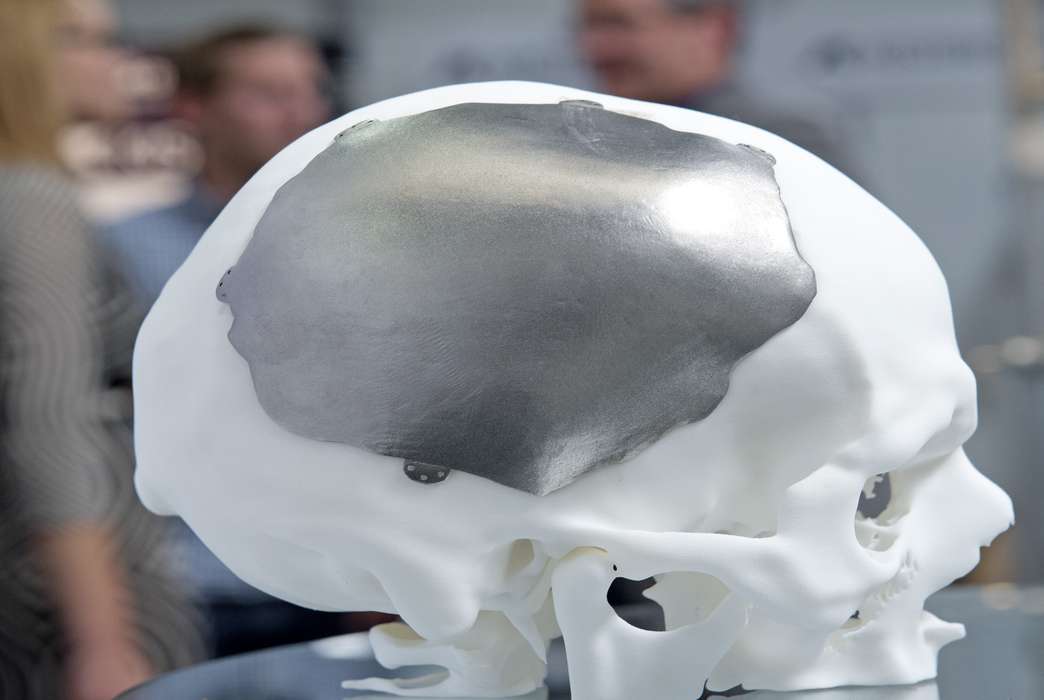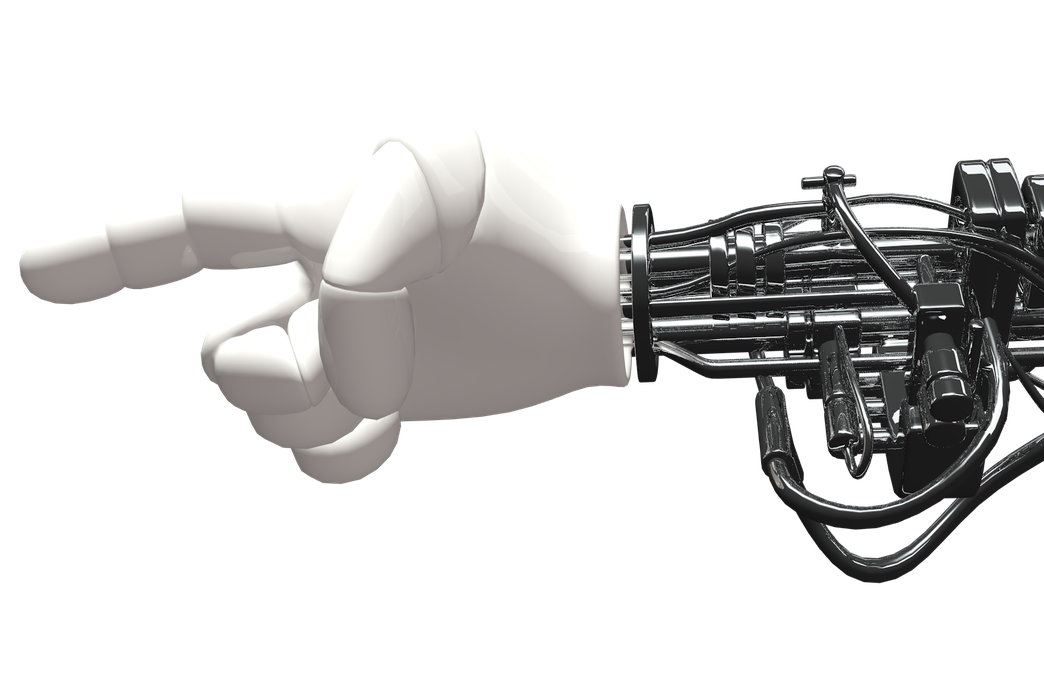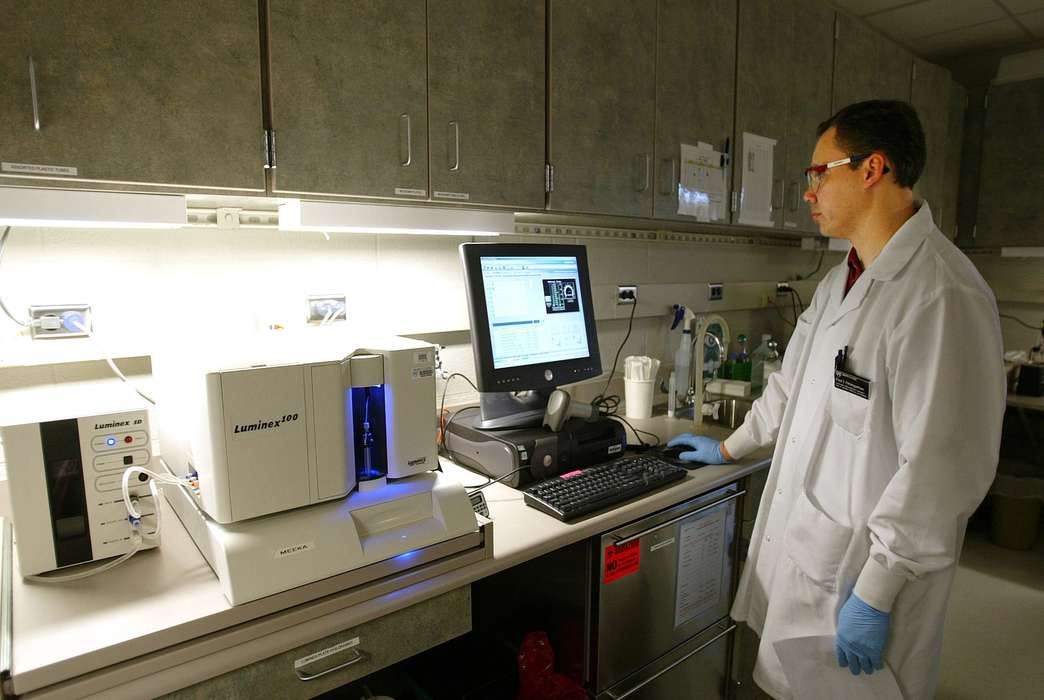New seizure-preventing role identified for brain immune cells
The brain has monitor cells that help keep seizures in check. (AP Photo/David Duprey)
Researchers at the San Francisco-based Gladstone Institutes discovered in mice studies that the brain's microglia, cells that constantly monitor surrounding neurons, keep spontaneous seizures in check by tempering neuronal hyperactivity.
The findings, published in a paper in Nature Neuroscience, reveals a fundamentally new role performed by microglia in normal brain function and opens avenues to better understand and possibly treat Alzheimer’s disease and other neurological disorders.
Microglia are important immune cells in the brain and spinal cord that destroy pathogens, consume dead or damaged cell tissue and promote and reduce inflammation, among other functions. They continuously extend branches to survey the space around them without resting, an energy-intensive activity that puzzled Katerina Akassoglou, a coauthor of the paper.
“I was very surprised why a cell in the brain would expend so much energy to move constantly in anticipation for something that might never happen,” said Akassoglou, a senior investigator at Gladstone Institutes and a professor of neurology at University of California, San Francisco. “You might never get infected with a pathogen or have a trauma to the head.”
To understand why microglia tirelessly monitor the brain, her research team bred and treated mice so that their microglia would remain alive but rarely moved their branches, achieved by inhibiting a signaling protein.
The researchers then “tickled” the whiskers of mice with and without immobilized microglia, which predictably activated neurons whose activity could be monitored. The microglia of the control mice became more active and tempered the excited states of nearby neurons, while those in the newly bred mice did not and had neurons that remained hyperactive for much longer.
The experiment demonstrated that healthy microglia did not move randomly but rather preferred to reach out to highly activated neurons, which they would bring back into a normal range of activity, according to the authors.
They also concluded that healthy microglia in the control mice helped prevent seizures, which can be caused by hyperexcited neurons. They gave a seizure-inducing drug to both groups of mice, and it triggered seizures in the mice with immobilized microglia at much lower doses, showing that they were more susceptible without their neurons being monitored.
The connection between microglia and seizures was demonstrated early on when the team found that a mouse in a cage had a spontaneous seizure — an “exciting” observation, Akassoglou said. About half of the 13 microglia-impaired mice died during the 14-month experiment as a result of the seizures, while all of the control mice survived.
The mice’s microglia-crippling condition, however, may be treatable. The researchers added an enzyme to the rodents’ brains that improved their microglia’s surveillance by overriding the inhibition of the signaling protein.
The newly discovered role of microglia may be the “missing link” between the immune system and neurological disorders that feature overactivated neurons or microglial mutations, according to Akassoglou. Her team offered their new breed of mice to “be used to study the role of microglia dynamics in pathophysiological conditions with neuronal hyperexcitability, such as Alzheimer’s disease, traumatic brain injury, epilepsy, autism, neuroinflammatory diseases and psychiatric disorders.”
The treatment that restored microglia movement gives hope that a similar therapy could be developed for humans with these brain disorders, the researchers wrote.
Moving ahead, Akassoglou’s lab is interested in investigating microglia’s role in Alzheimer’s disease and inflammatory diseases as well as their normal functions in the brain.
“This could be extremely important for normal brain functions — of attention, memory, learning — that can be so critical for diseases like attention deficit disorders,“ she said. “The implications of that could be both in physiology and pathology, and I think it would be a very exciting way to look at this intriguing biology and challenging questions through this new lens.”
The article, “Microglial Gi-dependent dynamics regulate brain network hyperexcitability” was published Dec. 14 inNature Neuroscience. The authors of the study were Mario Merlini, Victoria Rafalski, Keran Ma, Pamela Rios Coronado, Zhaoqi Yan, Andrew Mendiola, Mark Petersen, Sophia Bardehle, Reshmi Tognatta, Roza Meza Acevedo, Belinda Cabriga, Reuben Thomas and Jorge Palop, Gladstone Institutes; Elif Sozmen, Jae Kyu Ryu, Terry Dean Jr. and Katerina Akassoglou, Gladstone Institutes and the University of California, San Francisco; Shaun Coughlin, University of California, San Francisco; and Keun-Young Kim, Eric Bushong, Matthias Haberl, Matthew Madany, Daniel Narajo Sampson and Mark Ellisman, University of California, San Diego. The lead authors were Mario Merlini and Victoria Rafalski.









